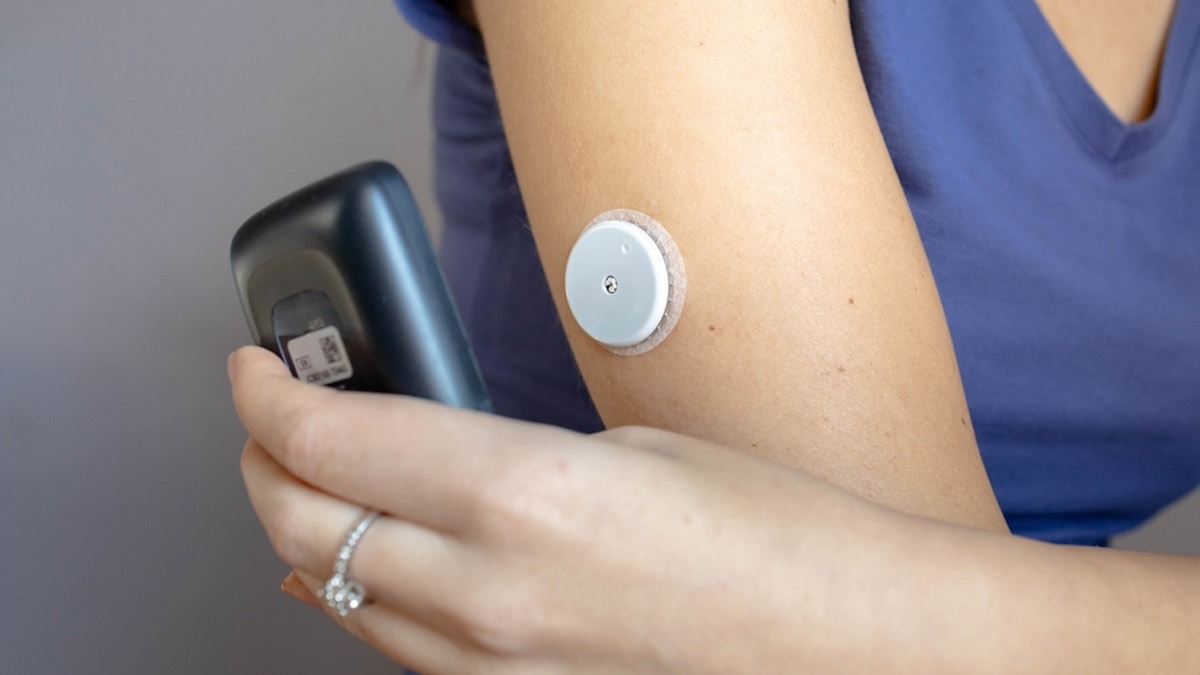
Early on in October, actor Katrina Kaif left fans mesmerised with her stunning Navratri celebration look. However, what grabbed more attention was a black patch on her arm. After careful observation, many people decoded it to be a Continuous Glucose Monitor (CGM) monitor by Ultrahuman, which is an innovative device that helps users track glucose levels in the body in real-time.
Table of Content:-
For those speculating that the Merry Christmas actor may have diabetes, it’s important to note that wearing a diabetes patch like a CGM doesn’t necessarily indicate a diagnosis. In fact, Dr Mahesh D. M., Consultant Endocrinologist at Aster CMI Hospital, Bengaluru, suggests that while the wearable device is designed to assist those managing diabetes, it can also benefit non-diabetics in specific contexts, such as aiding in weight loss or enhancing energy levels. Additionally, diabetes patches come in various forms and serve different purposes beyond just CGM devices.
Also Read: How Diabetes Can Affect Different Parts Of The Body
Understanding Diabetes Patches And Its Different Types![]()
Dr Mahesh describes diabetes patches as wearable devices that help manage diabetes by monitoring blood sugar levels effectively. These patches come in various forms, each tailored to meet the specific needs of users, including CGM systems and patch pumps, which provide real-time glucose readings, and adhesive patches that can be used for intermittent testing.
CGM systems provide real-time glucose readings through a sensor placed under the skin. On the other hand, patch pumps are insulin delivery devices that provide continuous insulin supply without the need for multiple daily injections. Adhesive patches allow users to check blood sugar levels without finger pricks. They contain a testing strip and sensor for periodic glucose readings, offering a practical monitoring alternative.
According to the doctor, the functionality of these patches makes it easier to check blood sugar and helps manage diabetes better.
For Both Diabetics And Non-Diabetic People![]()
Diabetes patches are particularly suitable for those who require a convenient and non-invasive method for managing their blood glucose levels. This includes both diabetic and non-diabetic people. This means that it can be beneficial for patients who experience difficulties with traditional insulin delivery methods, such as injections or pumps, as well as for people without diabetes who wish to improve their fitness levels, maintain healthy weight, and enhance energy levels, says Dr Mangesh.
However, it is essential for patients to consult with healthcare professionals to determine the appropriateness of diabetes patches based on their unique medical conditions and treatment plans, he notes.
Also Read: What Does An Ideal Breakfast Look Like For Diabetics: Foods To Eat And Avoid
Can Diabetes Patches Completely Replace Traditional Methods Like Finger Pricks?![]()
Diabetes patches are surely a modern alternative to traditional methods like finger pricks and insulin injections. What's unique and great about them is that they are a more comfortable and less invasive way to manage blood sugar levels.
A review published in Diabetes Research and Clinical Practice suggests that patch pumps can significantly enhance the quality of life for people with diabetes. Researchers highlighted how they are more discreet and less cumbersome than traditional pumps, making them easier to wear and integrate into daily life. Additionally, patch pumps can help reduce the emotional and psychological burden associated with managing diabetes. They simplify the insulin delivery process and provide greater flexibility, leading to less stress and anxiety.
With advanced technology, they can continuously monitor glucose levels and administer insulin as needed, reducing the need for painful finger pricks and multiple daily injections, shares Dr Mangesh.
However, they may not be a complete replacement for traditional glucose monitoring methods. Some people may still require finger prick tests to ensure accurate monitoring and effective treatment.
Also watch this video
How we keep this article up to date:
We work with experts and keep a close eye on the latest in health and wellness. Whenever there is a new research or helpful information, we update our articles with accurate and useful advice.
Current Version


